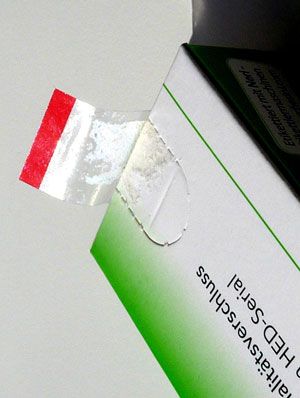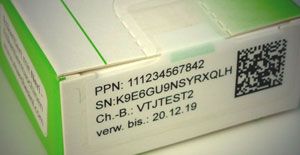Using Labels to Detect and Prevent Tampering
Equipment and Processing Report
Labels must have special features to prevent tampering of pharmaceutical packaging.
Tampering with pharmaceutical packaging is not only an economic issue but could be a matter of life and death. Therefore, Commission Delegated Regulation (EU) No 2016/161 requires pharmaceutical companies that commercialize prescription medicines in the European Union to provide pharmaceutical packaging with unique identifiers (i.e., serialization) as well as anti-tampering devices (1).
Nature teaches us how first-opening protection works: after a banana, orange or macadamia nut has been opened, there is no chance to unnoticeably alter the content and to reseal the fruit in a way that keeps it intact. Such perfect tampering protection can make packaging professionals outright envious or motivate them to use “nature’s first-opening protection” as a source of inspiration for their own efforts.
Tampering with labels
Of course, technical tampering protection has to be affordable, but first of all, it has to be efficient. Simply sealing a cardboard box by means of adhesive tabs is definitely not sufficient. A razor blade, a small amount of solvent, and a blow-drier are all it takes to open a box that has been “secured” like this and to restore its previous condition in a way that makes it impossible to notice that the box has been opened before. Neither does a label that is normally applied across the lid and bottom provide adequate tampering protection. The reason is that if the decorative varnish that the box has been coated with has insufficiently bonded with the cardboard surface, it is usually easy to peel off a sticker together with the varnished area underneath it and, after the contents of the box have been extracted or exchanged, to reapply the label using some adhesive.
Preventing label tampering
Figure 1: A label as tampering protection. Peel-off marks are visible on the substrate. All figures are courtesy of HED Serial GmbH.

Generally, a label can contribute a lot to tampering protection but, in order to do so, it must be provided with some special features. For instance, if there is an attempt to peel it off, a label may disintegrate or change its color, or the label may destroy the surface of the box on which it rests (see Figures 1 and 2). Another possible feature is that segments of the label may separate from it so that the label cannot be reapplied in the same place. Other options include the integration of indicators that show when the label has been exposed to heat or solvents, or marks being left after the label has been sliced along the edge that make it impossible to subsequently apply another label without this intervention being clearly visible. To comply with the EU Regulation 2016/161 or with the tampering protection devices stipulated by the Compliance Policy Guide 450.500 of the US FDA (2), one of these devices has to be integrated.
But there are some caveats to be taken into account when using labels as anti-tampering devices. The quality standards of the cardboard and the varnishes is difficult to specify especially if multiple suppliers come into play. It is even more difficult to find an adhesive displaying an illegal opening that is suitable for all cardboard surfaces. Preferably, a disintegrating label is used in combination with a strong adhesive for the label.
The EU Regulation 2016/161 describes the unique package identification by a serial number (serialization) and the need of anti-tampering devices as two components to improve patients' safety. Combining both requirements in one production step ensures compliance and patients' security and also helps reduce expenses in a reasonable way. Labels that accomplish this combination, as shown in Figure 3, for example, are available commercially.
Figure 2: A label as tampering protection. The label disintegrates into several parts. Courtesy of HED Serial GmbH.

A serialized sealing label combines a unique identifier (serial number) and tampering protection. Courtesy of HED Serial GmbH.

References
1. EU Commission Delegated Regulation 2016/161 (Brussels, 2 Oct. 2015).
2. FDA, Compliance Policy Guide 450.500 Tamper-Resistant Packaging Requirements for Certain Over-the-Counter Human Drug Products (Silver Spring, MD, May 21, 1992).
About the author
Jürgen Höfling is product specialist in packaging technology and a technical writer based in Munich, Germany.
